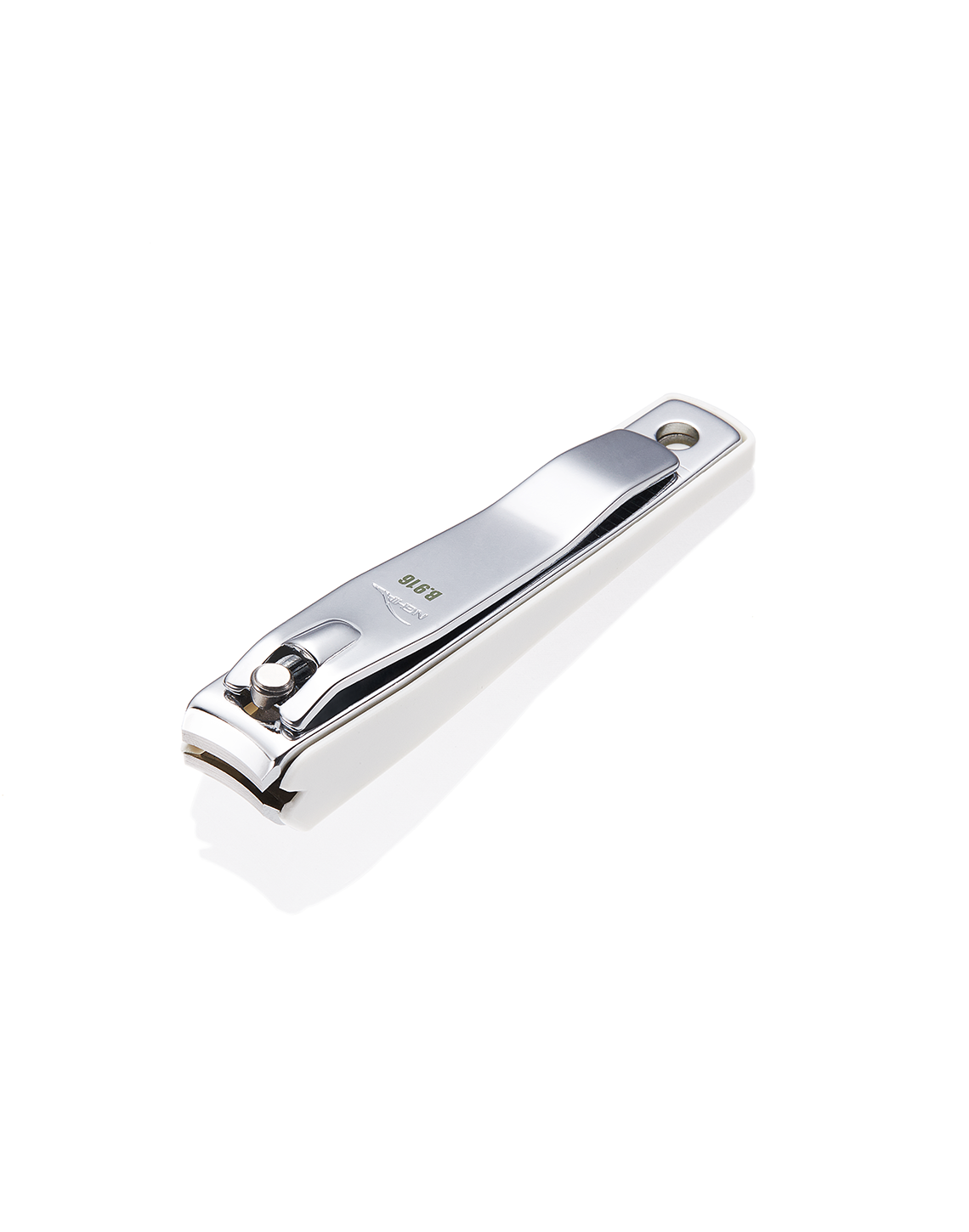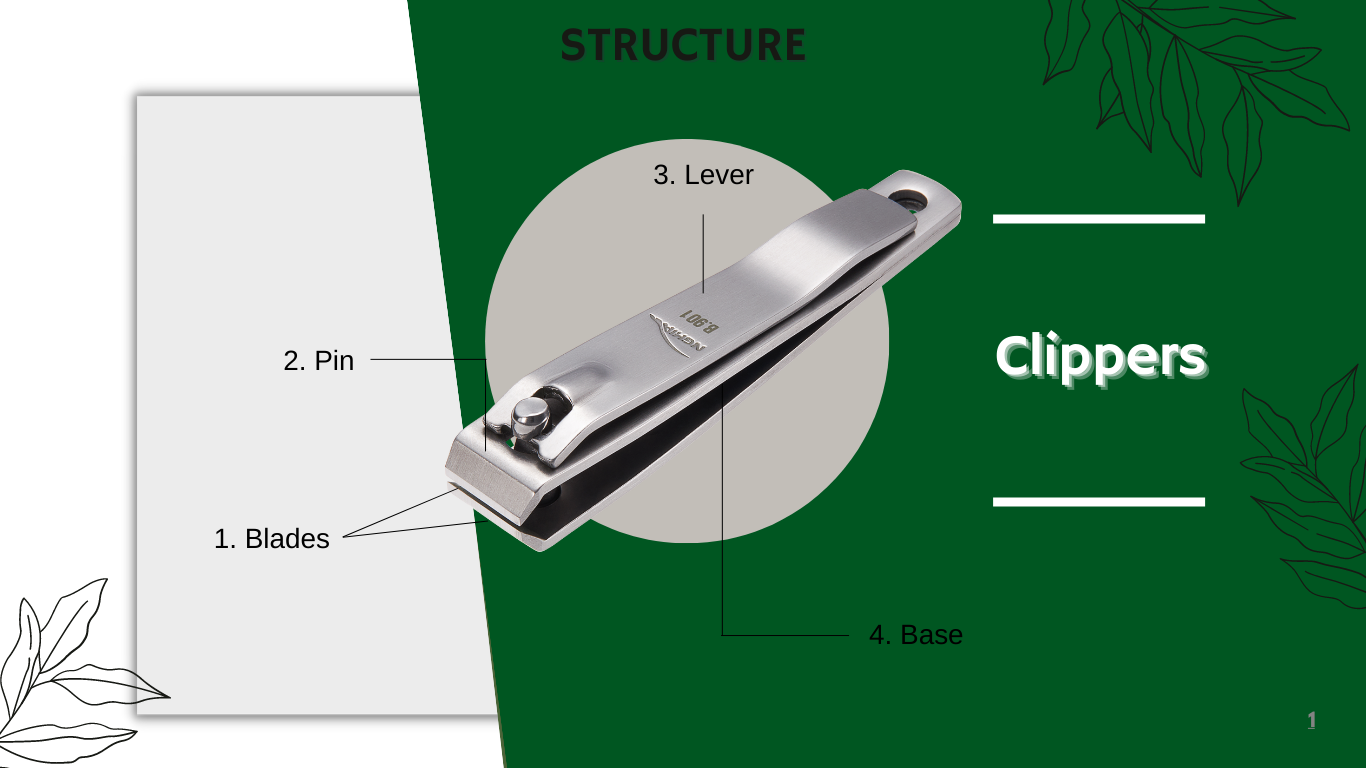In today's fast-paced world, nail clippers have become an essential tool for personal grooming. However, their journey dates back to ancient times, when humans devised various methods to trim their nails. This article aims to satisfy the curiosity of users seeking historical insights into the development and invention of nail clippers. From the earliest instances of nail care tools to modern advancements in technology, Nghia Nipper will explore the cultural significance, symbolism, and grooming practices related to nail care in different societies.
1. How did ancient humans cut their nails?
In ancient times, humans employed various methods to cut their nails due to the absence of modern nail grooming tools, leading to the use of rudimentary techniques. Some of the common methods included biting, where they used their teeth to trim excess nail length, although this approach was not the most precise or hygienic. Another method involved cutting with sharp objects such as stones, knives, or other implements, carefully shaving or trimming their nails to the desired length.

In some cultures, nails were filed or abraded against rough surfaces like rocks or shells to achieve the desired shape and length. Moreover, certain daily activities, such as manual labor or working with rough materials, naturally wore down the nails, helping to keep them relatively short. It is important to note that these nail care methods varied across different civilizations and cultures, but they all shared a common goal of maintaining hygiene and grooming practices throughout the history of nail clippers.
2. The invention of nail clippers
The emergence of specialized nail care tools marks a significant step in the history of nail grooming. Here, we delve into the origin of the first nail clippers and the individuals or cultures attributed to their invention. The evolution of nail clippers begins with investigating the need for a more efficient and precise way of trimming nails.
2.1 Earliest instances of nail care tools
Before the advent of nail clippers, early civilizations experimented with a range of nail care instruments. Archaeological evidence suggests the use of nail files and rudimentary cutting devices made from materials such as stone or bone. These early tools laid the foundation for the evolution of modern nail grooming implements.
2.2 First recorded invention of nail clippers
The precise origin of nail clippers is not entirely documented, but historical records suggest that they were first developed during the 19th century. The earliest recorded design of nail clippers showcased a simple lever mechanism that allowed for controlled nail cutting, which was a significant advancement in nail care technology. With this invention, individuals could achieve more accurate and hygienic nail grooming, revolutionizing their personal care routines.
2.3 Key features of early nail clippers
Early nail clippers were characterized by their basic yet functional design. Typically, they consisted of two levered blades hinged together at a pivot point. When pressed, the blades would come together, facilitating the cutting of nails. While these early clippers lacked the ergonomic features of modern versions, they were a notable step forward in nail grooming efficiency.

As time progressed, the design and materials used in nail clippers evolved, enhancing their performance and durability. Today, nail clippers have become an indispensable tool in personal grooming, with various designs tailored to different preferences and needs. From the earliest instances of nail care tools to the widespread use of nail clippers today, their journey showcases the continuous pursuit of precision and convenience in maintaining well-groomed nails.
3. Evolution and advancements in nail Clippers
The evolution of nail clippers has been a fascinating journey, driven by the quest for more efficient and user-friendly grooming tools. Over the years, nail clippers have undergone significant advancements, transforming from rudimentary devices to sophisticated tools that cater to diverse grooming needs. As technology and innovation progressed, nail clippers became more precise, durable, and versatile, revolutionizing the way people care for their nails.
Find out now: Nail nipper how to use
3.1 Changes in design and materials
One of the key factors contributing to the evolution of nail clippers has been the changes in their design and the materials used. Early nail clippers were relatively simple, featuring a basic lever mechanism and basic materials like steel or other metals. However, as design aesthetics and functionality gained importance, nail clippers started incorporating ergonomic features such as rubberized grips and improved leverage for ease of use.

Furthermore, the materials used in manufacturing nail clippers have diversified. High-quality stainless steel and alloys have replaced traditional metals, ensuring greater durability and resistance to rust and corrosion. Some modern nail clippers also feature coated blades, which provide a smoother and more precise cutting experience while minimizing the risk of accidental nicks and cuts.
3.2 Impact of industrialization and mass production
With the advent of industrialization and mass production, nail clippers became more accessible and affordable to a broader population. This shift from handcrafted to machine-made clippers led to a significant increase in their availability, making them a household item worldwide. The widespread distribution and affordability of nail clippers have encouraged better nail hygiene practices among people from all walks of life.
3.3 Modern advancements in nail clipper technology
In recent times, technological advancements have further elevated nail clipper technology. Electric nail clippers, for instance, have become popular due to their precision and convenience. These battery-operated devices offer automatic nail trimming, eliminating the need for manual force. Additionally, some electric nail clippers come equipped with various attachments to cater to different nail grooming requirements.
Moreover, modern nail clippers have diversified to cater to specialized needs, such as toenail clippers with elongated handles for easier reach or baby nail clippers designed with rounded edges for safety.
4. Cultural significance of nail clippers
Nail clippers hold cultural significance in various societies across the world. The act of nail grooming is not merely a matter of personal hygiene and aesthetics; it often carries deeper cultural meanings. In some cultures, well-groomed nails are associated with cleanliness, self-care, and overall well-being. Individuals take pride in neatly trimmed nails as a sign of respect for themselves and others.
4.1 Nail grooming practices in different societies
The diverse nail care practices in different societies highlight the cultural richness and customs within each community. Nail grooming methods are not merely about aesthetics but also reflect deep-seated values and perspectives within each cultural context.
In some cultures, long, beautifully manicured nails are considered a symbol of beauty and social status. People cherish long, well-groomed nails to express refinement, elegance, and sophistication.
However, other cultures prioritize short, neatly trimmed nails, emphasizing the importance of personal hygiene and convenience in daily life. Additionally, some societies value the adornment of nails with intricate patterns and designs as a means of self-expression and individuality.
Moreover, in certain religious and cultural contexts, nail care becomes a symbol of worship, cleanliness, and discipline.No matter the approach, the nail care methods in different societies showcase the diversity and unique styles of each cultural heritage.
See more: How to sharpen nail clippers
4.2 Symbolism and hygiene standards
Symbolism and hygiene standards play significant roles in nail care practices across different cultures. Beyond mere aesthetics, well-maintained nails often carry deep symbolic meanings and reflect the importance of personal hygiene.

In some religious and social contexts, clean and trimmed nails symbolize purity, discipline, and attention to detail. Individuals take pride in their well-groomed nails as a reflection of their character and self-respect. On the other hand, neglecting nail care or having excessively long nails may be associated with a lack of discipline or poor hygiene standards.
Moreover, in certain cultures, specific nail grooming rituals and traditions are observed with historical and spiritual significance. These rituals are often tied to significant life events, ceremonies, or festivals, further reinforcing the symbolic importance of well-groomed nails.
4.3 Rituals and traditions related to nail care
Nail care rituals and traditions are an integral part of various cultures, offering insights into their customs and beliefs. These practices hold deep cultural and sometimes spiritual significance.
From special ceremonies for trimming newborns' nails as symbols of protection and fresh beginnings, to elaborate nail designs during weddings and celebrations, nail grooming is a form of self-expression and cultural importance.
Additionally, in some ancient civilizations, nail treatments were incorporated into healing rituals, believed to promote overall well-being and spiritual harmony. Warriors and high-ranking individuals in certain cultures adorned their nails with decorative elements, representing strength, bravery, and social standing. Across generations, some indigenous communities preserve their cultural heritage through nail care traditions.
The history of nail clippers reveals a fascinating journey from rudimentary tools to modern, technologically advanced instruments. Exploring the cultural, historical, and technological aspects of nail grooming helps us appreciate the significance of this seemingly simple yet essential part of personal care throughout human history.













